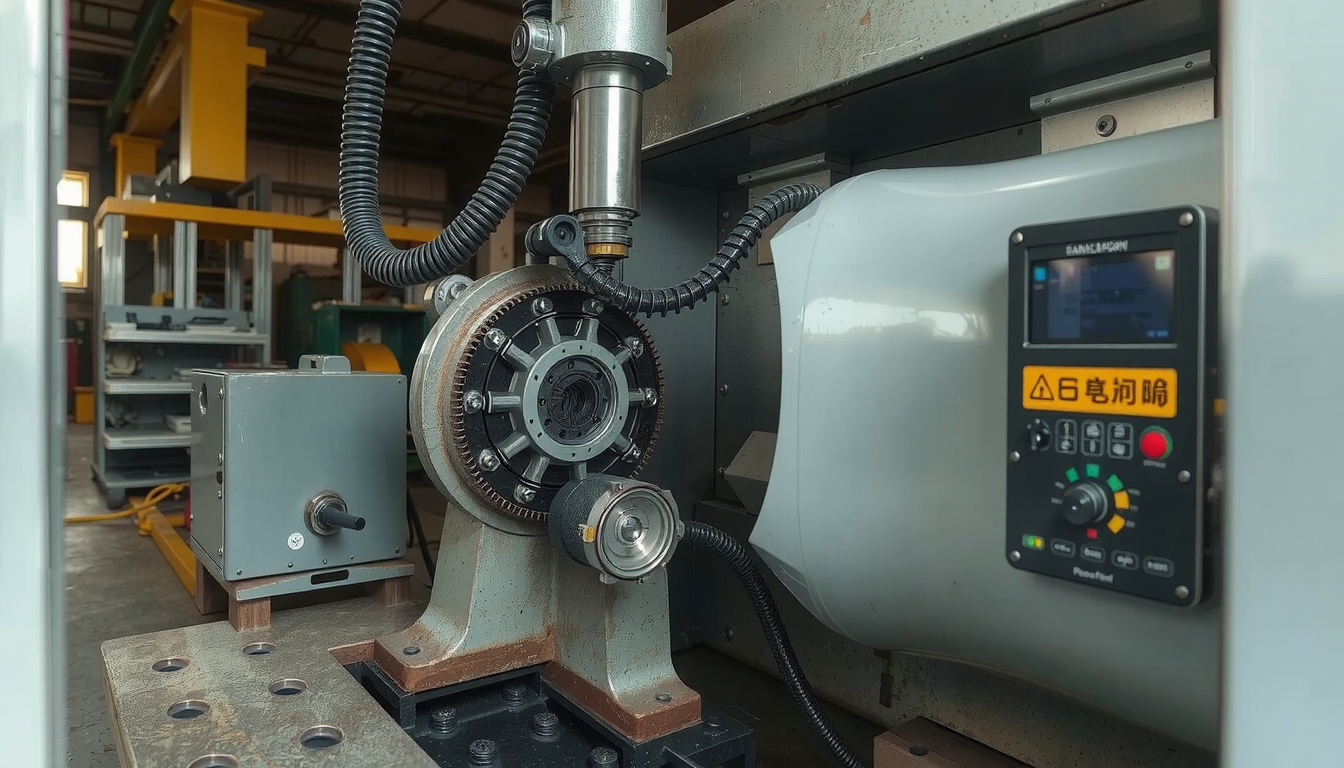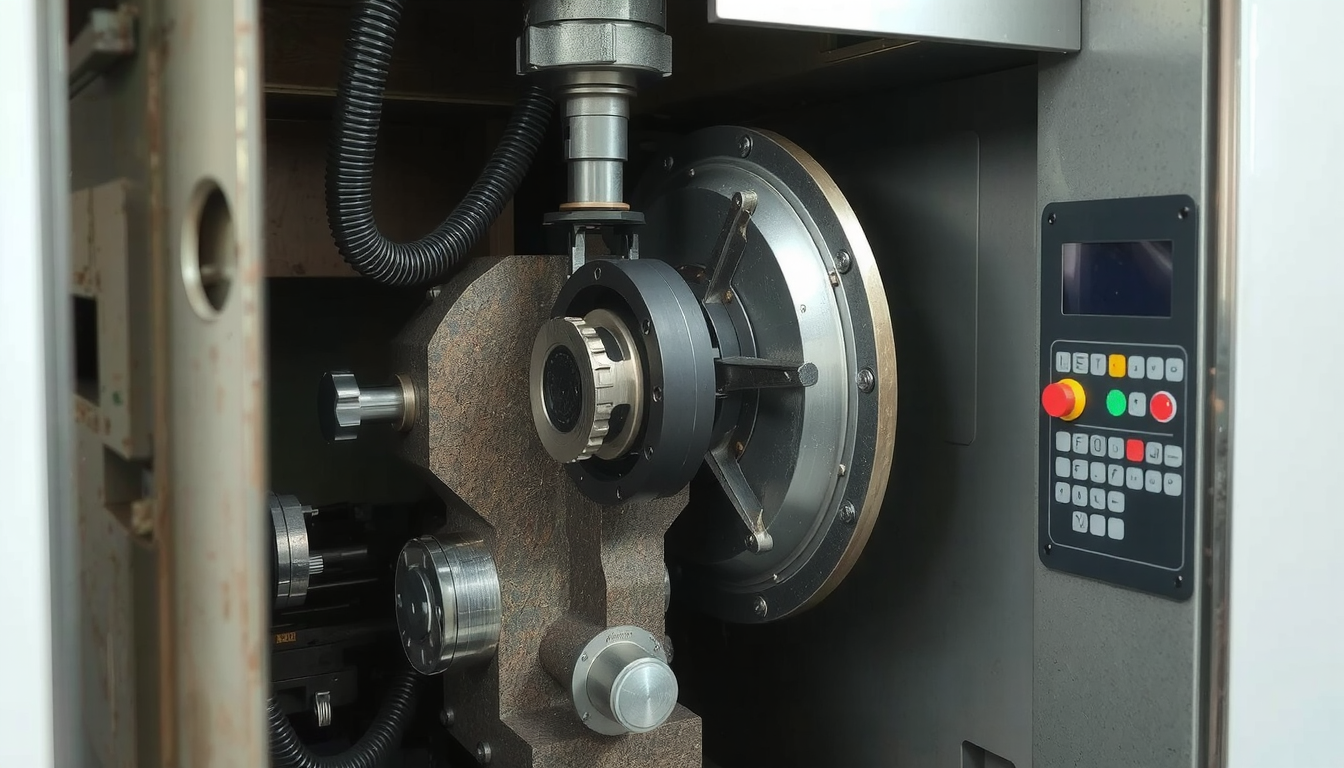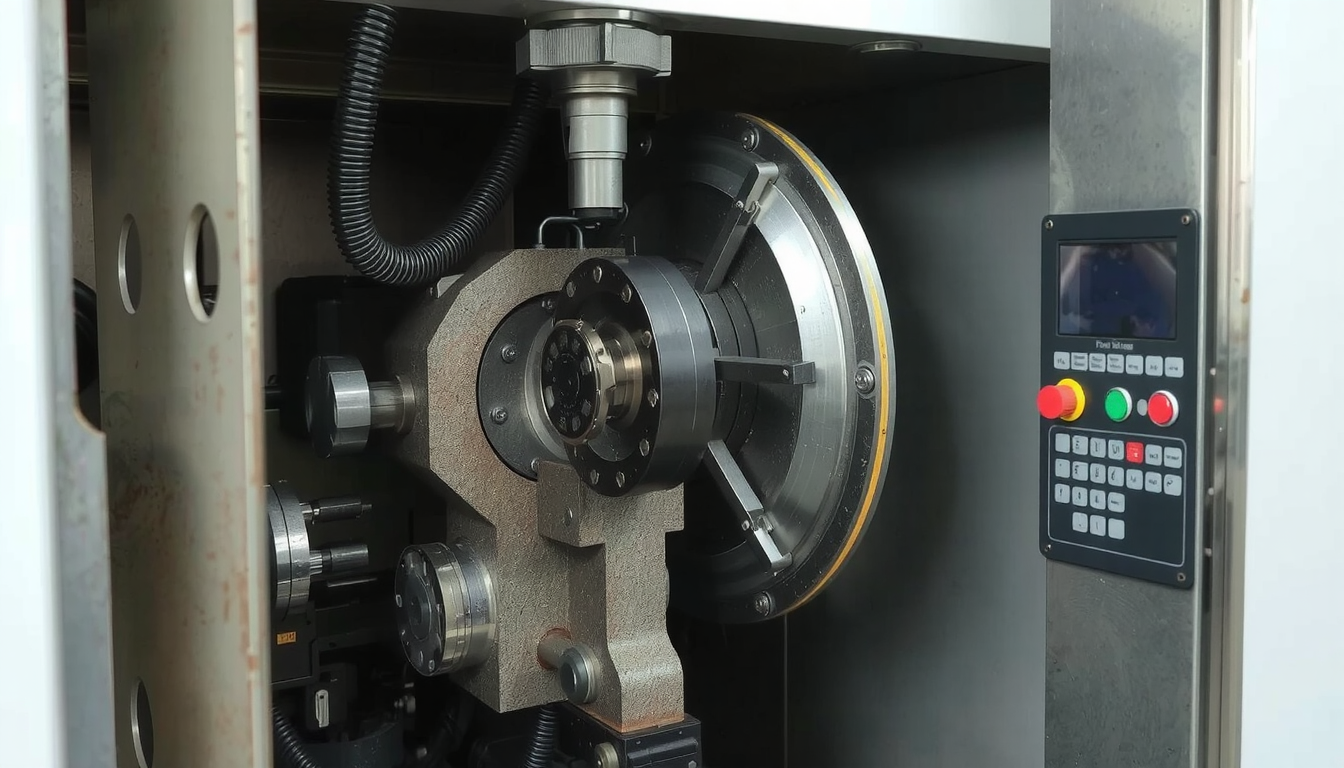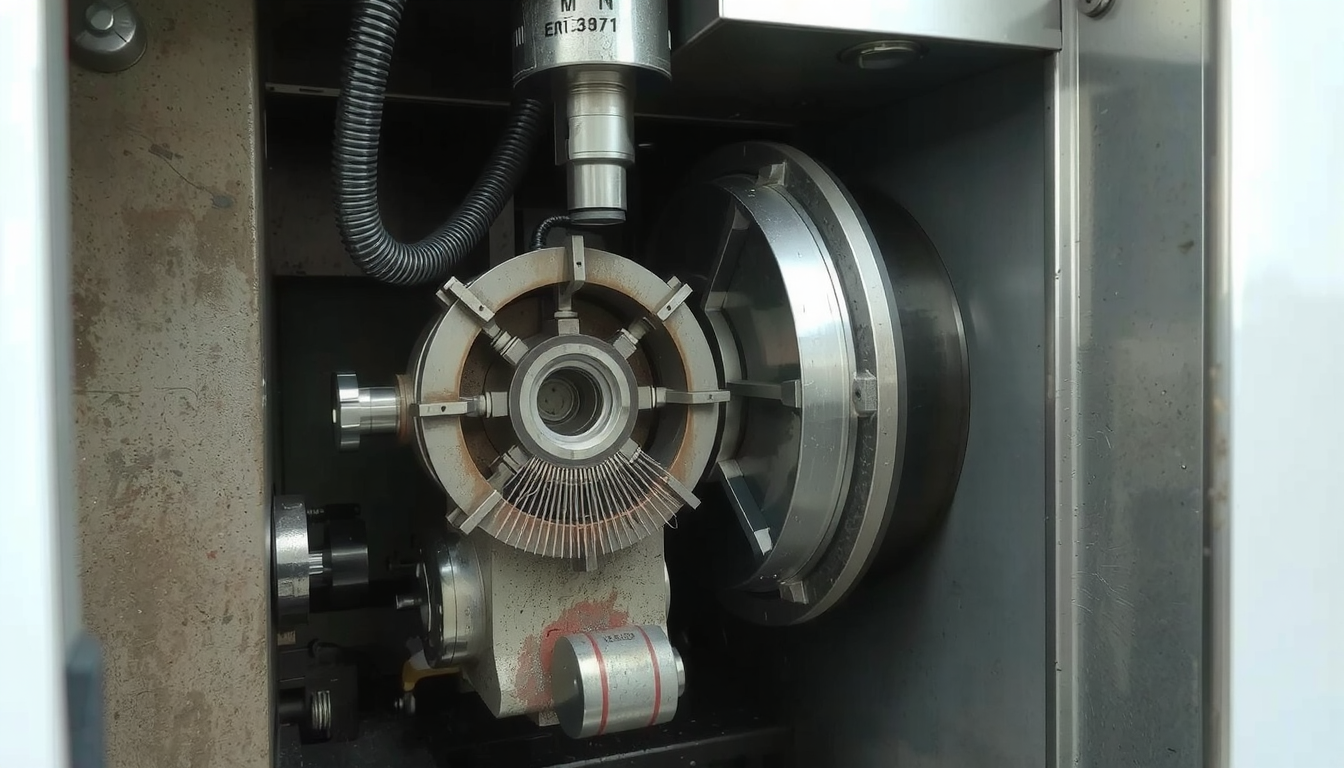A CNC lathe machine is one of the factory’s smart tools. It is used for producing parts that are circular and symmetric. The major material in the creation process is plastic or metal. The machine is being turned and the start piece is spinning and revoluting at a very high speed.

The rotation of the material causes this process to take place. Only the tool that is used to cut material and its direction of movement differ. When the blank part is done, it is controlled by the machine.
In this guide, we will show you how a CNC lathe device works. We will study its features such as the parts it forms and the processes it is capable of. Thus, it is no wonder this machine is in high demand in today’s factories.
The Basic Principle: How a Lathe Shapes Materials
A CNC lathe employs “subtractive manufacturing.” This means it creates shapes by cutting material from a stock piece. Picture a potter’s wheel: instead of the potter forming clay with his fingers, an object is styrning away a material.
The rotating material is termed the workpiece. It spins as the cutting tool slides across its surface. This process action is called “turning.”
A standard lathe requires an operator to do it manually. A CNC lathe is not like that. “CNC” stands for Computer Numerical Control. A computer program directs the whole machine to perform all the operations. That is exactly what a CNC lathe does so well. It makes parts with unparalleled accuracy and it can create them in huge amounts.
Parts of a Modern CNC Lathe: The Main Components
To understand the working of a CNC lathe, being familiar with its parts is a must. Each piece has a role that needs to be carried out to produce a precision part effectively.
The Brain and the Body

- CNC Controller: The computer is the operator and the screen is the one where the program is being loaded. It operates like the brain of the lathe. It commands other parts when and what to do.
- Bed: The bed is the lathe’s robust and immovable base. Because it is heavy, it provides stability. Therefore, the machine reduces vibration and cuts with higher precision.
Workpiece-Holder Parts
- Headstock: The headstock component contains the main motor and the spindle. The workpiece is rotated due it providing the power.
- Spindle: The spindle is the shaft that rotates.
- Chuck: The chuck is the clamp that connects to the spindle. The workpiece is being attached to it and no slipping is allowed during the spin.
- Tailstock: The tailstock is on the opposite end of the workpiece. It can be adjusted by sliding along the bed. It serves to support the end of a long or thin workpiece in order to prevent bending while cutting.
Tool-Holding Parts
- Turret: This is a rotating disk that holds multiple different cutting tools. The CNC controller can switch the turret automatically to the desired tool to make a specific cut.
- Carriage: The carriage is a part that moves the turret. It travels back and forth in a straight line down the bed and toward the workpiece.
We work with the latest machinery at Mecanext. Using these components we are able to achieve high quality parts for our clients.
CNC Lathe Operations: A Complete Guide
Then, what does a CNC lathe used in the actual practice do? The machine performs particular cutting actions known as operations. By combining the simple and advanced ones, the machine can produce very complex shapes. Thus, a CNC lathe is a flexible machine tool that can do a big range of operations.
For each operation, the machine utilizes specific tools. The CNC program selects the tool and schedules its usage.

Here are some of the needed tools include:
| Operation Name | Description | Primary Use |
|---|---|---|
| Turning | The tool goes in the direction of the rotating workpiece’s side. | To shorten the workpiece diameter to a desired value. |
| Facing | The tool traverses the end face of the workpiece. | To embrace one face of the workpiece, set its length, and make a surface even and flush. |
| Drilling | The rotating workpiece is drilled with the center bit. | To make a hole starting at the center of the workpiece. |
| Parting | A thin, blade-like tool penetrates the part. | To separate a finished workpiece off the raw supply. |
| Grooving | A contoured tool enters into the part to the appropriate depth. | To create a tight space, like in a seal or an O-ring. |
| Threading | One specific tool runs in several different directions. | To create internal or external threads on a screw thread. |
| Knurling | A demarcated tool presses against the workpiece. | For texturing the grip area on the surface. |
| Boring | A tool is utilized inside an already existing hole surface. | To do a hole finish to a very accurate diameter. |
From Raw Material to Finished Part: A Step-by-Step Example
Let us look at the process of the CNC lathe converting a bar stock into a simple part such as a pin with a flange. This example demonstrates how the machine pairs operations to change a raw material into a useful part. The CNC lathe process explained step by step.
Step 1: Stock Preparation
First, the operator takes a long round aluminum bar and loads it into the machine through the chuck. The chuck blocks down and secures the material very well.
Step 2: Facing
The program plays. The tool turret pivots to a “facing” tool. The tool moves to the edge of the bar and cuts its face. A perfect surface to start with is just flat and clean.
Step 3: Rough Turning
Then, the turret changes to a powerful “turning” tool. That tool travels fast in the side of the bar, narrowing most of the material. The contour created in this step is called the “roughing” pass and is done quickly.
Step 4: Finish Turning
The machine is now ready to use a “finishing” tool. This tool goes a very light last pass along the same surface, creating a good smooth surface of the proper final diameter.
Step 5: Parting Off
Finally, the turret turns to the “parting” tool. This tool goes inside the workpiece with a length that is right, and it slices off the pin out of the bar stock. The fresh piece is deposited in the piece catcher. The machine is ready for the next part again.

What Can You Make? Real-World Uses
The CNC lathe’s strength in producing precise round parts has ensured that it is adopted in almost all types of industries. If we are dealing with the part being round and having spiral grooves or getting a disc of a certain shape, we can be near certain the component is a lathe-made one.
Here are some uses of the parts:
- Automotive: Piston screws, valves, driveshafts, axles, custom-short suspension parts, and nuts and bolts.
- Aerospace: High-strength fittings for fuel lines, turbine engine shafts, and critical parts for landing gear.
- Medical: Hip implants in surgery like robust bone screws, and special endo tools for precision operations.
- Electronics: Tiny connectors, protective housings, and small shafts used in motors and sensors.
- Oil & Gas: Durable valves, threaded pipe fittings, and components for rig equipment that have to endure high pressure.
If you require unique parts with this kind of accuracy, the next step to your project statement will be looking at the CNC lathe services provided professionally.
The Clear Advantages of a CNC Lathe
The main reason why CNC lathe machines are so commonly used is due to a couple of strong reasons. Such advantages are solely the reason for why automated turning has become the leading face in the field of manufacturing.
- Precision & Accuracy: With a CNC lathe, you can achieve the most precise parts called tolerances. Tolerances of ±0.0005 inches (0.0127 mm) often exceed the limits of what can be achieved.
- Repeatability: Under the same conditions and on the same program, the machine just makes parts of the same quality over and over.
- Speed & Efficiency: Automation allows CNC lathes to run constantly with little oversight. This ultimately results in an increase in production speed versus manual methods.
- Complexity: Modern lathes that have multiple axes can change the shape a great deal within one setup. This avoidance of double handling and the prevention of error both serve to improve accuracy.
- Safety: The cutting process is completely mechanical and there is a complete enclosure to protect the machine operator from rotating parts, blades, and flying debris.
These machines are highly utilized in various fields due to their advanced technology, precision, and effectiveness, thus they are a CNC lathe machine must-have for a diverse group of applications.
Frequently Asked Questions (FAQ)
Here are answers to the public’s frequent queries about the functioning of a CNC lathe machine.
1. What’s the difference between a CNC lathe and a CNC mill?
A CNC lathe is a spinning machine with a workpiece that is rotated while a stationary tool cuts it. This is the best application for cyclic or tubular items. The opposite is a CNC mill. The tool is rotary and moves it against a secure workpiece. It is more suitable for flat surfaces, blocks, pockets, and non-round shapes.
2. What materials can a CNC lathe machine work with?
CNC lathes are very flexible. They are suitable for operating many materials. This includes such metals as aluminum, brass, steel, and titanium. They also perform well on plastics like ABS, nylon, and polycarbonate. Some can also cut wood. The type of material largely depends on the capacity of the machine, as well as the cutting tools involved.
3. Is it hard to learn how to operate a CNC lathe?
Grasping the basics of operation is quick but becoming a good machinist needs time. You would have programing skills (mainly G-code). Secondly, you have to understand materials and the right tools to choose and how to resolve issues. Hands-on work with technical knowledge is what they are about.
4. What does “turning” mean in CNC machining?
“Turning” is the actual operation of a lathe. It describes the action where a cutting tool moves parallel to the rotating workpiece. This process is called parting off the part’s diameter. Because this is a primary function of the machine, CNC lathes are often called “turning centers”.
5. How much does a CNC lathe machine cost?
CNC lathe machines can have a price range from low to high. Small benchtop lathes can be found for a few thousand dollars. Larger CNC lathes that are fully automated with many axes are obviously very much more expensive. The equipment used for mass production could cost hundreds of thousands of dollars or maybe more. Total expense is a matter of size, features, brand and new or refurbished status.
Conclusion
The essential function of a CNC lathe machine is to be a doorway into precision manufacturing. It does just that. By spinning of the raw material and cutting it in the right way, it answers the question “what does a CNC lathe machine do”. This way it shapes the variety of cylindrical parts we use in the modern world. From a simple pin to a complicated aerospace part, the machine must produce parts that have a lot of precision and speed. Thus, it is being equipped in many technologically advanced areas thus making it indispensable.

